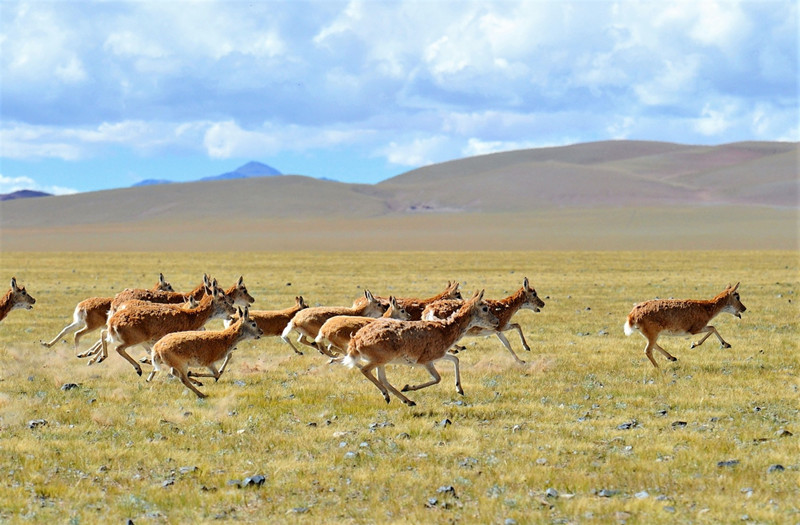
Wildlife thriving in high plateau
The news was updated on August 12, 2019.

Diverse wildlife in close proximity to domesticated herds of animals in the Tibet autonomous region are increasingly commonplace thanks to the government’s efforts in the development of nature reserves.
Due to biodiversity protection efforts, the region has established 47 nature reserves covering an area of more than 412 million square kilometers, accounting for over 34 percent of the region’s land area.
At 298,000 sq km, the region’s Changthang National Nature Reserve is China’s biggest, and has become a haven for rare high plateau wildlife such as wild yaks, argali and Tibetan antelope.
The reserve spreads over seven counties — Amdo, Nyima and Tsonyi in the north, and Rutog, Gerze, Ge’gyai and Gar in Ngari prefecture.
The reserve is one of China’s 25 State key eco-functional areas, and it is regarded as a climate stabilizer and resource for Alpine biological species.
At an attitude of 5,000 meters above sea level, covering about 120,000 sq km and nestled about 800 km northwest of the region’s capital Lhasa, Tsonyi accounts for more than 60 percent of the reserve’s land area.
Tsering Lodre, an official with the forestry and grassland bureau of Tsonyi county, said that since the reserve was established in 1993, the county has been fighting against poachers and illegal animal trade.
“In recent years, we no longer see animals, wild or domesticated, killed by human factors. The wild animal populations have been increasing steadily and often wolves are the culprits on the grasslands,” said the 47-year-old.
With 18 years of experience working at the bureau, Tsering often hears about wild yaks interfering with the herding of domesticated yaks, wild yaks attacking herders or even wild male yaks luring away some of the herders’ female yaks.
“Four of seven townships of our county have little conflict with wildlife unless nomads get too close to glaciers or snow-capped mountains where wild yaks usually dwell,” Tsering said.
“If herders live in valleys or lower areas, the wild yaks will leave nomads in peace. However, cases like brown bears making trouble in people’s homes or attacking people are frequently reported,” he said.
In order to bring harmony between wildlife and herders, Tsering’s bureau has established 15 patrol stations in the reserve, and 135 local residents are employed to work as professional patrolmen.
In 2018, the local forestry bureau invested more than 4 million yuan ($568,533) for ecological preservation work and the bureau is awaiting completion of the patrol station in one of the county’s depopulated areas.
“The awaiting patrol station is located 165 km away from the county town, and once its completion is expected by the end of the year, 15 patrolmen will work there,” Tsering said.
“Thanks to the patrols guarding ecological safety around the clock, we no longer hear about people attacking wildlife. We only hear about tourists driving close to animals to take pictures,” he added.
The forestry and grassland bureau in Nagchu said there are 36 patrol stations, 390 patrolmen and more than 200 locals employed temporarily every year as ecological protectors in the city.
The central government has invested more than 15 million yuan over the 36 patrol stations annually, with 21,435 rural residents of the city employed as patrolmen of grasslands and forests and more than 75 million yuan spent every year on paying subsidies to locals involved in ecological protection. The annual ecological subsidy paid to rural residents engaged in conducting ecology patrols was raised to 3,500 yuan per capita.
The bureau said the reserve’s number of Tibetan antelope has increased from more than 50,000 before the establishment of the reserve to more than 200,000 now. The population of wild yaks has increased from 2,000 in the past to more than 10,000 now and wild asses grew from 50,000 to 90,000 now. Populations of snow leopards, argali and blue sheep have also increased in recent years.
The regional government has been encouraging rural residents to undertake ecological protection in recent years, with 667,000 jobs related to the environment offered in 2018.
Source from Tibet.cn.













